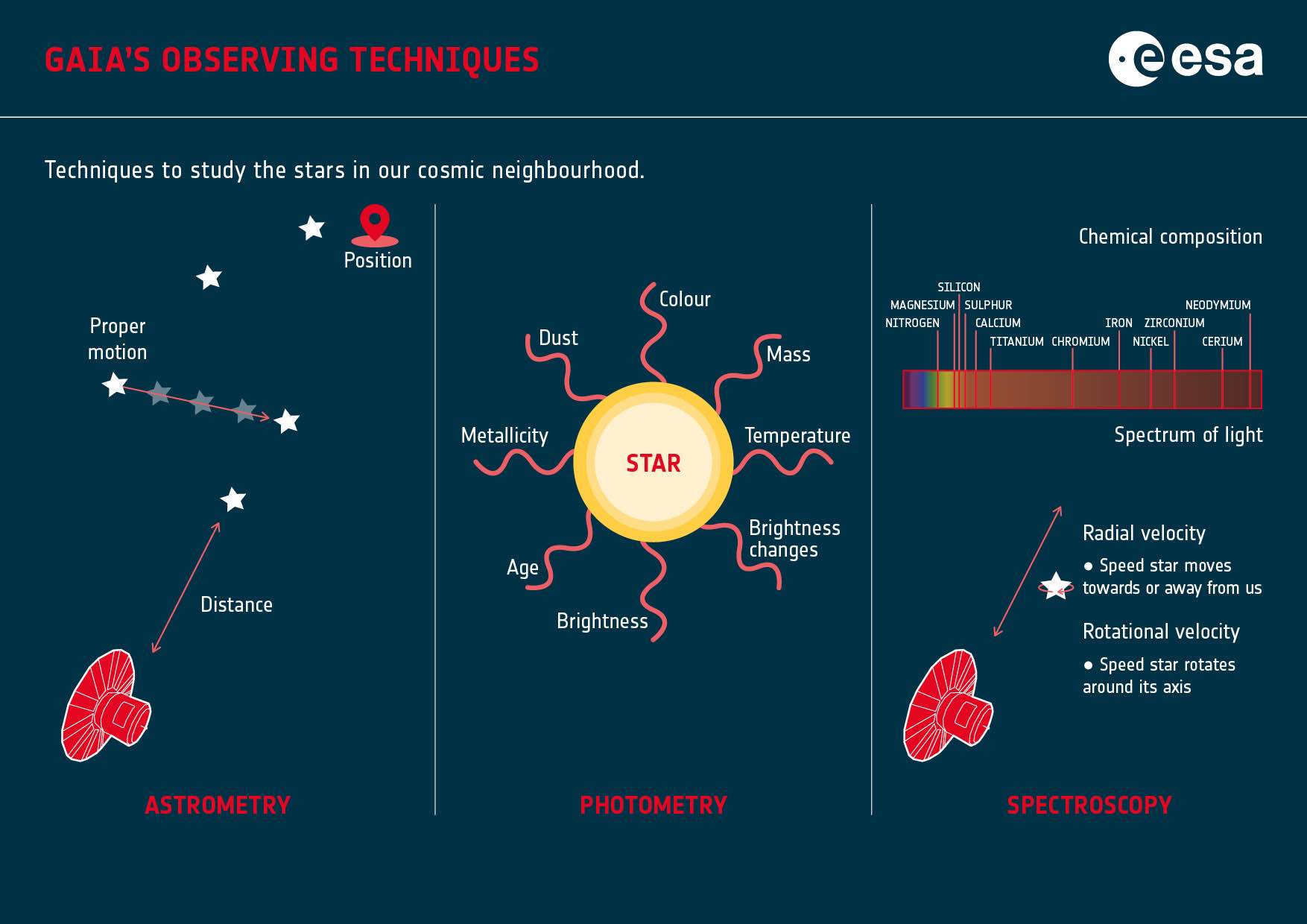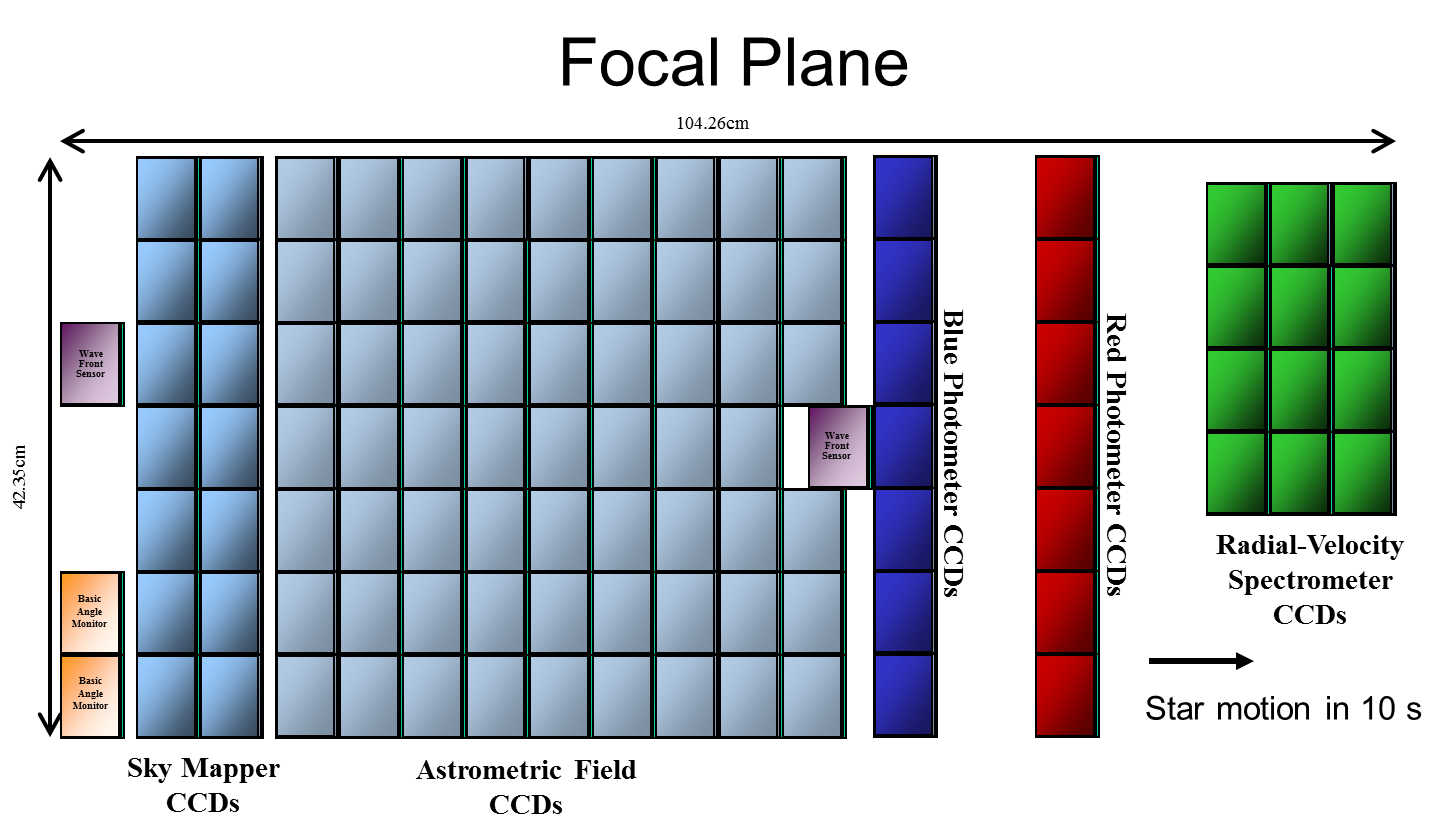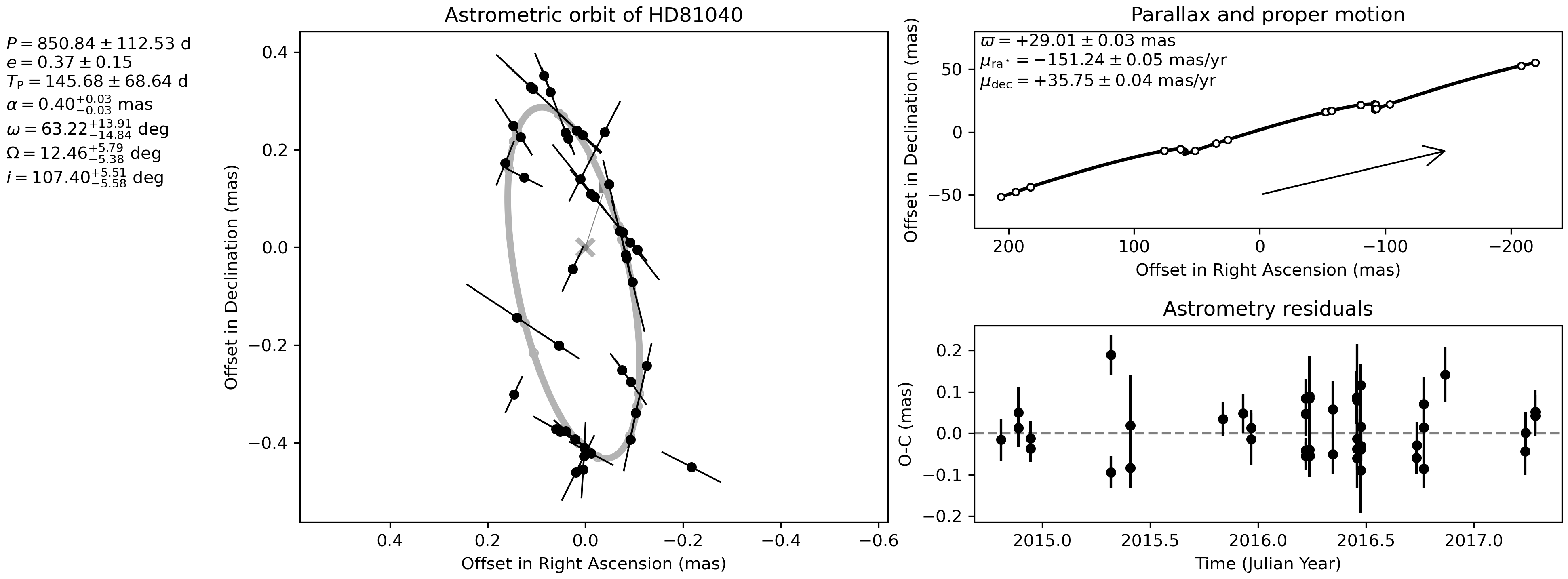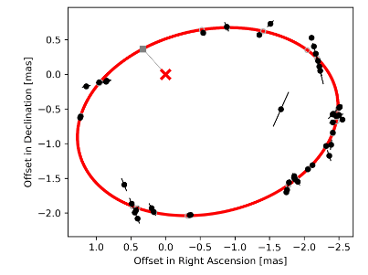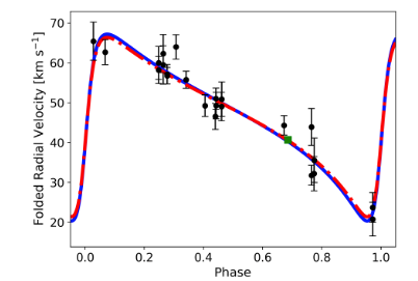Is it a double star? - Gaia
Is it a double star?
Discover Gaia's non-single star catalogue
For the first time, Gaia releases results on non-single stars. An impressive catalogue of over 800,000 multi-star systems is published as part of Gaia’s data release 3. The published solutions of these systems have been obtained by making use of all three observing techniques of Gaia: astrometry, photometry and spectroscopy.
Left: The Gaia spacecraft contains three science instruments: the astrometric instrument, the blue and red photometer, and the radial velocity spectrometer. Published here. Right: Gaia's focal plane. Published here. Credits: ESA.
In multi-star systems, two or more objects are orbiting one another. The combination of different objects and the way they orbit each other have distinct signatures. When the objects are orbiting one another with a period of months or years, i.e. a separation large enough between the objects, their wobble on the sky can more easily be detected by astrometry. When the objects are orbiting one another with a small period, of the order of hours to days, their proximity makes the transit of one in front of the other more probable to be oriented along the line of sight, which is then distinguished thanks to the regular drop of brightness. For short periods also, the radial velocity variations due to the orbital motion may be large, and then the orbit may be detected by the spectrometer. In most of the cases, however, the system is so far away that the various components of the system cannot be individually seen. In such cases, only one source is seen: the photocentre of the system, i.e., the location where the combined light is coming from.
For the discovery of multi-star systems, Gaia’s various instrument capabilities are very complementary. As we just saw, they are sensitive to different period ranges, but this is also the case in terms of distance ranges. This can be seen when we make a plot of the full catalogue and look at it as if we are located above the Milky Way plane.
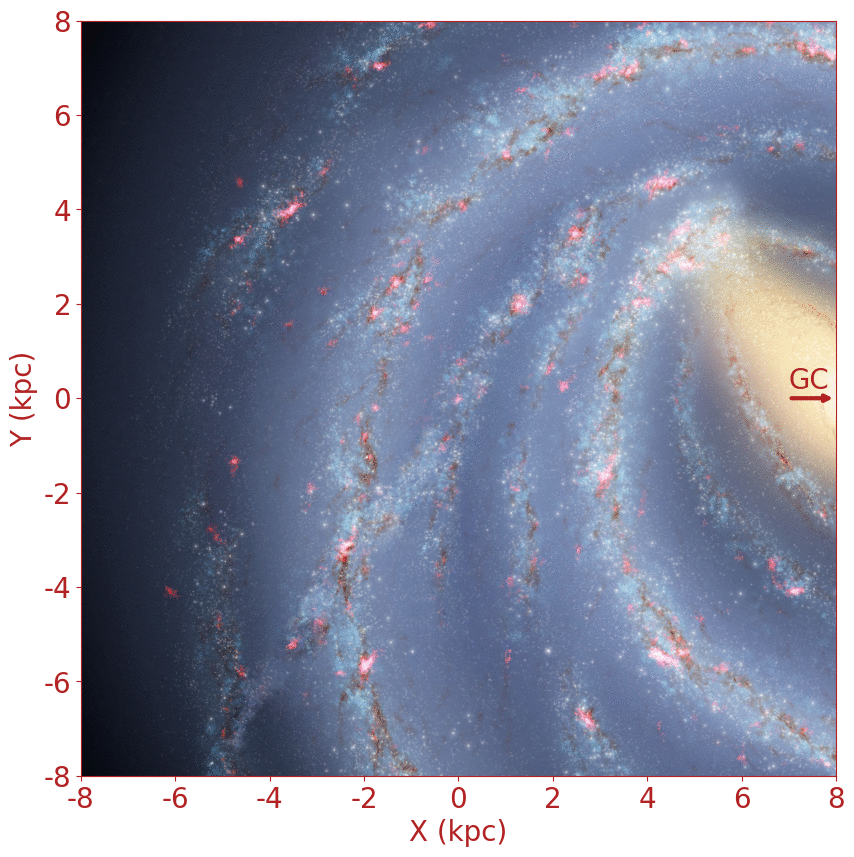
As the angular motion on the sky of the binaries decreases with distance, astrometric binaries are detected at small distances only. At the other extreme, eclipsing binaries can be detected at very large distances by even a small drop of brightness of faint stars. In between, the spectroscopic binaries could in principle be seen independently of distance, but since spectra are obtained for bright stars only, the stars are generally at a limited distance only. Credits: ESA/Gaia/DPAC - CC BY-SA 3.0 IGO. Acknowledgements: created by Nathalie Bauchet, based on the data described in the paper "Gaia Data Release 3: Stellar multiplicity, a teaser for the hidden treasure" by the Gaia Collaboration, Arenou, F., et al. 2022.
Let us now have a look at the wobble seen in the position of the photocenter of a source. If Gaia observes only one source of a multi-star system (with the other one too faint or too close to see), it sees the source wobble around on the sky (on top of the much larger motion due to its motion across the sky and the parallax effect).
Sky-projected motion of HD 33115 (Gaia DR3 4810832695483445760), a new binary star discovered by Gaia. The left panel shows the inferred parallax and proper motion over 1000 days, the middle panel shows the modelled orbital motion of the starlight coming from the system over the same time and to scale, and the right panel shows the superposition of both motions, which is what Gaia has actually observed. ESA/Gaia/DPAC, CC BY-SA 3.0 IGO. Acknowledgements: Johannes Sahlmann (RHEA Group for ESA) who made use of https://github.com/ManimCommunity/manim.
The photocenter is seen to be moving slightly. The solutions found in this way are referred to as astrometric binaries.
Sky-projected orbits of 335 binary stars determined by Gaia, shown to scale and ordered by increasing distance from the Sun out to 50 pc. The colour roughly corresponds to the source's colour as determined by Gaia with purple/blue indicating hot stars and white dwarfs, green/yellow indicating Sun-like stars, and red indicating cool low-mass stars. ESA/Gaia/DPAC, CC BY-SA 3.0 IGO. Acknowledgement: Johannes Sahlmann (RHEA Group for ESA) who made use of https://github.com/ManimCommunity/manim. Inspired by the Kepler orreries.
There are many reasons why a star’s position wobbles. The wobble could be caused by an extrasolar planet orbiting the star, a star wobble so tiny that it is quite hard to distinguish. Proof of Gaia’s ability to see known exoplanets can be found in the paper "Gaia Data Release 3: Stellar multiplicity, a teaser for the hidden treasure" or "Gaia Data Release 3: Astrometric non-single stars processing with Markov Chain Monte Carlo and Genetic Algorithms". Not only did Gaia detect systems of previously known exoplanets, it can even discover new ones. And it has done so for dozens of them, though they will remain candidate only until confirmed independently. A list with Gaia (candidate) exoplanets is published now as well.
Astrometric orbit of HD81040 (left panel) as determined by Gaia. North is up and East is left. The sky-projected orbit model about the system barycentre marked with an "x" is shown in grey. The star's modelled parallax and proper motion is shown in the top-right panel by the solid curve, where open circles indicate the times when the star crossed the Gaia field-of-view. The arrow indicates the direction of motion. The bottom right panel shows the post-fit residual normal-points. Read more about this image here. Credit: ESA/Gaia/DPAC, CC BY-SA 3.0 IGO.
The reason why a confirmation is needed is because the tiny change in the photocenter position can be due to either a star orbited by an exoplanet or two almost completely identical twin stars. Independent confirmations will thus be needed, with interesting results to expect in both cases.
This brings us to the second way of distinguishing multi-star systems, which is by observing a dimming or brightening of the source over time. These solutions are referred to as eclipsing binaries, because when the fainter source is eclipsing the brighter one, the light coming from the source will be slightly dimmed, equally when the eclipse is over, the source is brighter again.
Eclipsing binaries are detected thanks to the periodic dimming of a star due to an eclipse by a companion. Only when the line of sight is precisely along the plane of the orbit can it be observed as eclipsing. As this is more frequent if the two sources are very close, detected eclipsing binaries have short periods. When too close, the two companions may even be in contact. The variation of the magnitude (i.e. the shape of the light curve, top left) will show whether this is the case. Credits: ESA/Gaia/DPAC - CC BY-SA 3.0 IGO.. Acknowledgements: ESA/Gaia/DPAC/CU4/NSS, Nathalie Bauchet
The Gaia DR3 catalogue contains 87,073 eclipsing binary solutions as found through the non-single star pipeline by Coordination Unit 4 of the Gaia Data Processing and Analysis Consortium. This sample where the orbits could be computed has been extracted from the huge sample of 2,184,477 eclipsing binaries classified as such thanks to the specific object studies pipeline by Coordination Unit 7.
Coordination Unit 7 is in charge of the variability processing and classifies many stars that dim or brighten in different ways, and the challenge is to distinguish between the different ways of blinking and connect these to the many causes a star’s light could be variable.
These examples are light curves (in G magnitude) of eclipsing binaries detected by Gaia's Coordination Unit 7, folded with their orbital periods (2.57 days for the system on the left and 2.05 days for the system on the right). The system below has a light curve modulation out of the eclipses due to the gravitational influence of at least one of the two stars on the surface geometry and temperature distribution of the other star. The green areas indicate the durations of the eclipses in the folded light curves. Credits: ESA/Gaia/DPAC, based on "Gaia Data Release 3: The first catalogue of Gaia eclipsing binaries - Candidate identification" by Mowlavi et al. 2022 - CC BY-SA 3.0 IGO.
But Gaia not only measures brightness and position, it also measures spectra of sources. The measure of the displacement of the lines in the spectrum of a source gives us its radial velocity. Consequently, if a source moves periodically towards and subsequently away from us, as it does when orbited by another source, its radial velocity changes periodically. The multi-star systems detected by a wobble seen in the spectrum are referred to as spectroscopic binaries. Gaia’s third catalogue contains 186,905 of these solutions.
The radial motion of a star can be seen in its spectrum due to the Doppler shift of the spectral lines. When two stars orbit each other at short distance, the radial velocity variations are large. For clarity two spectra are shown here but only one is seen in practice. The lines of the two stars are seen oscillating if the two stars have a similar magnitude; otherwise only the lines from the brightest are seen. Credits: ESA/Gaia/DPAC - CC BY-SA 3.0 IGO.. Acknowledgements: ESA/Gaia/DPAC/CU4/NSS, Nathalie Bauchet
For a large subset of binary systems, Gaia’s catalogue contains solutions with the full orbit known (not only a part of it, showing an acceleration only). This means a first description is given of how the two bodies orbit one another. Even better, sometimes, a binary is detected both with astrometry and spectroscopy, providing even more information about the orbit. What is fueling these orbits is the mass of the two components, so, if enough information is known from the orbit, or if some help is available from the spectral type of the primary source, then the masses of the companions can be estimated. A table has been published in Gaia DR3 providing masses, or lower and upper limits for them, for thousands of sources (see "Gaia Data Release 3: Stellar multiplicity, a teaser for the hidden treasure"). Even better, in some cases, the magnitude of each of the two components can also be estimated, and this even if the two stars are seen as one unique source only on the sky. This magic can be explained by the fact that the position of the photocenter depends both on the mass ratio of the components and their luminosity ratio. Obtaining both mass and luminosity of two stars having the same age will undoubtedly provide interesting information for stellar physics.
As Gaia has been able to measure even the tiny motion of a star due to a small companion, it is clear that most of the tens of thousands of other orbits concern more massive companions. Most are couples of “normal” stars, but there is also the other extreme of massive “dark” companions, or at least much less luminous than the primary, brightest star. These are remains from the stellar evolution of one of the stars in the couple. Indeed, Gaia discovers many systems like the Sirius system where a normal star is accompanied by a faint white dwarf: this companion was more massive and brighter at the beginning of the life of the system and thus evolved faster. Intermediate evolutionary cases such as pre-white dwarfs have also been found by combining photometry and spectroscopy.
Even more massive companions may also be present in the Gaia data, with the secondary more massive than the primary star. One star orbited by a dormant neutron star (dormant because it does not accrete matter from its companion and therefore does not emit X-rays) may have been found and several other systems are candidates for containing a neutron star or a black hole, but that’s so rare that alternative explanations may well be possible.
Gaia DR3 513602552152793907 binarity has been detected both from an orbit on the sky (left) and by the variation of its radial velocity (right), with a period of 536 days. The mass of the primary star is 1.2 solar mass and the secondary mass is estimated to be 1.5 solar mass, that may thus be a dormant neutron star. Credits: ESA/Gaia/DPAC, images taken from the paper by Gaia Collaboration, Arenou, et al. 2022 - CC BY-SA 3.0 IGO.
These potentially exciting discoveries, of which several remain to be confirmed with additional studies, merely scratch the surface of the scientific content of Gaia DR3. The DPAC publications contain only shallow explorations of selected topics and can be used as entry points and inspirations for more thorough analyses. An enormous and homogenous dataset for the study of non-single stars is now just one archive query away.
Infographic on the observing techniques used by Gaia to discover non-single stars, through astrometry, photometry and spectroscopy. Credits: ESA/Gaia/DPAC - CC BY-SA 3.0 IGO.. Acknowledgements: ESA/Gaia/DPAC/CU4/NSS, Nathalie Bauchet
The Gaia DR3 Catalogue contains for the first time more than 433,000 multiple stellar systems for which orbits could be determined. Several dozen stars in DR3 have substellar and planetary companions. In this video, one flies to a few cases: (1) HD81040: A super-Jupiter orbiting a G-type star with a period of 1000 days. This planet was discovered using radial velocities and Gaia determined the star's astrometric orbit. (2) Gl876: The Gaia orbit corresponds to the M-dwarf's reflex motion due to the orbiting planet `b` which is a gas giant and was one of the earliest radial-velocity discoveries. This system is less than 5 pc distant from the Sun. (3) HD40503: This is a candidate giant exoplanet around a K dwarf discovered by Gaia astrometry. The orbital period is about 850 days and the inferred planet mass is about 5 Jupiter masses. (4)WD0141-675: This is a candidate giant exoplanet around a nearby white dwarf discovered by Gaia astrometry. The orbital period is about 33 days and the inferred planet mass is about 9 Jupiter masses. The white dwarf is located within 10 pc from the Sun. (5) HD114762: This star hosts the first substellar companion candidate around a solar-type star which was identified from radial velocities in 1989. The Gaia results shows that the orbit is seen almost face-on and the the companion is therefore a low-mass M dwarf. (6) J0805+4812: This known system is composed of two brown dwarfs with spectral types of L4 and T5. Gaia's orbit determination refers to the photocentre of the system, dominated by the brighter primary component. (7) UCAC2 1151977 is a Sirius-like binary comprising a main sequence primary with a white dwarf companion. The white dwarf is considerably hotter than the primary star. Credits: ESA/Gaia/DPAC - CC BY-SA 3.0 IGO. Acknowledgements: Stefan Jordan, Toni Sagristà, Johannes Sahlmann, Martin Barstow, created with Gaia Sky.
Credits: ESA/Gaia/DPAC
Story written by T. Roegiers, F. Arenou, J. Sahlmann, A. Jorissen, M. Barstow, N. Bauchet
- Removed a total of (25) style text-align:center;
- Removed a total of (39) style text-align:justify;
- Removed a total of (1) style margin:0;
More Gaia DR3 stories?
Where are the stars? How far away are they? How bright are the stars?
What colour do they have? What are the stars made of?
Where do they go? Where do they come from? Do they approach us? Do they move away?
Did something move in front of the star? What is in between the stars?
How big, warm, old, ... are they? How do they Blink?
Is it a double star? Do they go boom? Is it a galaxy?
Is it a solar system object? Is it a quasar?
Who created the data? Can I Use Gaia data with other observatories?
How did DPAC produce the data for this star? Where is the data?
-
ESA's press release of Gaia Data Release 3
-
Gaia's Early Data Release 3 stories
-
ESA's press release of Gaia Early Data Release 3
- Removed a total of (16) style text-align:center;








































 Sign in
Sign in
 Science & Technology
Science & Technology
